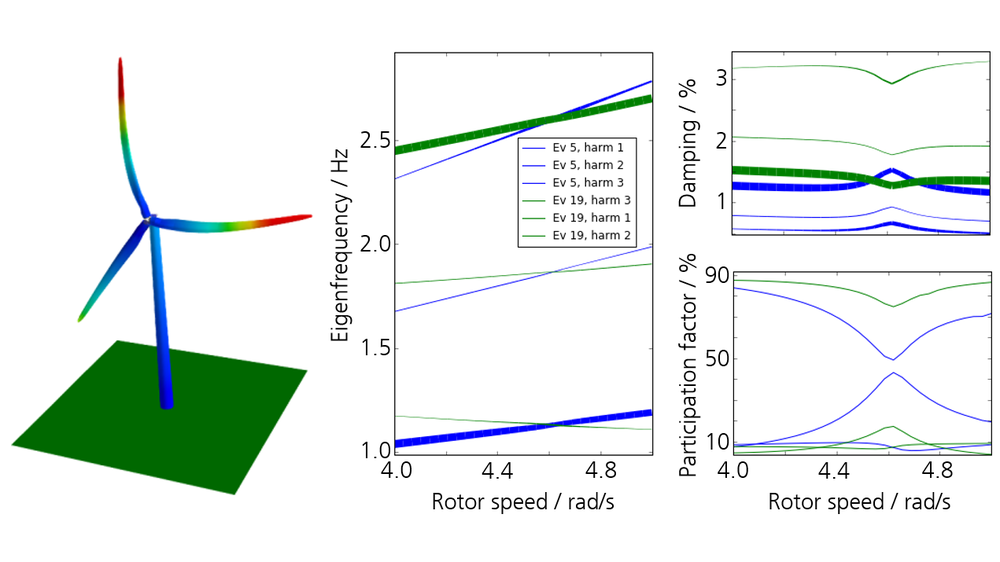Aeroelastic Simulation of Wind Turbines


For the aeroelastic simulation and analysis of wind turbines, models of different levels of complexity are used. The vibrational behavior due to the interaction of elastic structure and unsteady aerodynamics is of particular interest. We develop methods to analyze the influence of parameter uncertainties on the system dynamics and to compute operational loads for the structural design of wind turbine components.
Aeroelastic models of wind turbines
For predictions of the aeroelastic behavior of wind turbines, models of varying complexity are needed, depending on the issue at hand. They have to describe the fundamental interaction of fluid and structure. Especially on the aerodynamic side, fast and complex models differ significantly from each other. Models based on the blade element momentum theory are usually used in combination with unsteady extensions with few degrees of freedom for the calculation of loads, whereas CFD simulation meshes have a typical size of around 100 million cells. These complex models are used to generate reference results and to carry out virtual experiments. We perform simulations with Bladed, HAWC2, Simpack, Ansys, AeroDyn and the DLR flow solver TAU.
Stability of rotating systems
All of these models are suitable for simulations by time integration. Linearization of the coupled system equations is possible with some of the tools, if a steady state equilibrium is assumed. In this way, the assessment of vibrational characteristics and stability of wind turbine models is possible with low computational effort.
If the direct linearization is not possible because the properties of the system under investigation - and therefore also its equilibrium state - are periodic, e.g. due to asymmetries such as gravitational forces or the inclination of the rotor plane, or because the tool does not have the corresponding capabilities, alternative methods are required. We develop and apply methods based on the decomposition of linear time periodic systems according to Floquet theory and applied for this purpose. The state transition matrices that describe the system are derived from fundamental solutions that are the results of time simulations.

Influence of parameter uncertainties
A wind turbine model is an abstract representation of a complex machine. It becomes a manageable mathematical description through simplifying assumptions. In addition, real turbines are subject to variations due to manufacturing imperfections, changing environmental conditions or degradation. Models with uncertain parameters in form of probability distributions allow to take these variations explicitly into account. We are investigating the influence of such model uncertainties on the predicted vibrational characteristics of wind turbines. To this end, the open source framework wtuq has been developed to establishes an interface between uncertainty quantification (UQ) analyses and turbine simulation tools.
